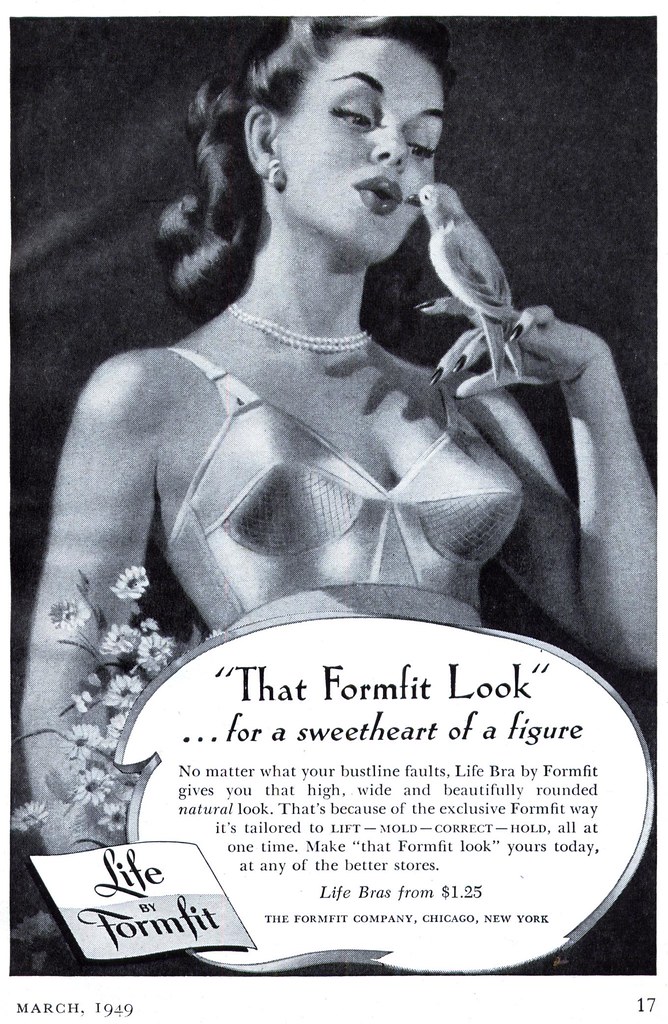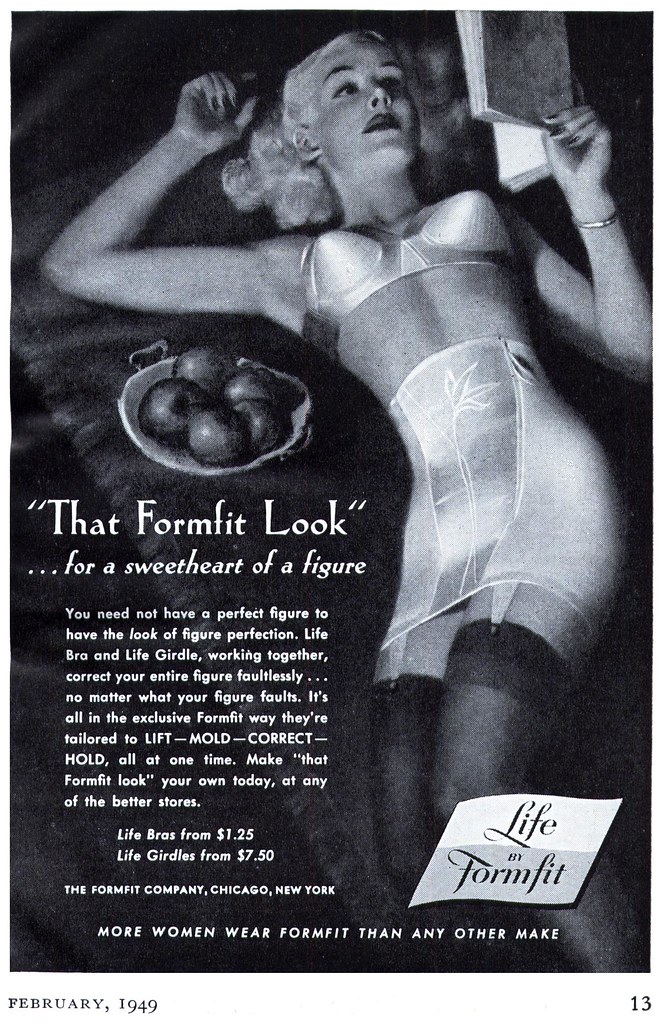
During all those years Pete Hawley was wowing us with his singularly unique take on illustrating women's undergarments for Jantzen's long-running series of ads, the folks at Formfit chose a more old school approach.

Formfit's ads, which ran in most of the women's magazines (and, for some reason, in the general interest digest publication, Coronet) utilized the skills of a variety of illustrators -- but the look of all their ads closely resembled a lot of the pinup art of the day.

I'm not well versed in the subtleties of individual pinup artist's styles so take this with a grain of salt but among varying degrees of skill displayed in the anonymous Formfit illustrations the really top-notch ones look to me like they could have been done by Gil Elvgren or Joyce Ballentyne.

Having spent so many years in advertising, I find Formfit's marketing strategy really intriquing... it seems to be implying a sexually suggestive message while attempting to conform to the acceptable standards of that sexually repressed era.

Otherwise why would Formfit choose to create ads that were so reminiscent of the pinups of the day? Were they attempting to appeal to their women customers or the husbands of those women? If it was the former, how often did 1950's women see pinup art? And if it was the latter, how often did 1950's men peruse their wive's magazines? Its a little difficult to fathom from the distance of a half a century and decades of more sexually liberal attitudes.
All these images plus several more have been added to my Pin-ups Flickr set.
Ranger Bob sent me this email and has agreed to let me copy and paste it here:
ReplyDeleteYou are not the first person to wonder about the rationale for making ads so blatantly sexy. A notable countrywoman of yours asked the same question nearly 40 years ago:
"Once I had settled myself on the bus I propped the laundry bag beside me on the seat, hoping it looked from a distance enough like
a small child to fend off the righteous indignation of those who
might object to working on the Lord's Day. I was remembering a
previous incident, a black- silk-swathed old lady with a mauve hat
who had clutched at me one Sunday as I was getting off the bus. She
was disturbed not only because I was breaking the fourth
commandment, but also because of the impious way I had dressed in
order to do it: Jesus, she implied, would never forgive my plaid
running-shoes. Then I concentrated on one of the posters above the
windows, a colourful one of a young woman with three pairs of legs
skipping about in her girdle. I must admit to being, against my
will, slightly scandalized by these advertisements. They are so
public. I wondered for the first few blocks what sort of person
would have enough response to that advertisement to go and buy the
object in question, and whether there had ever been a survey done on it. The female form, I thought, is supposed to appeal to men,
not to women, and men don't usually buy girdles. Though perhaps the
lithe young woman was a self-image; perhaps the purchasers thought
they were getting their own youth and slenderness back in the
package. "
- Margaret Atwood, "The Edible Woman," 1969